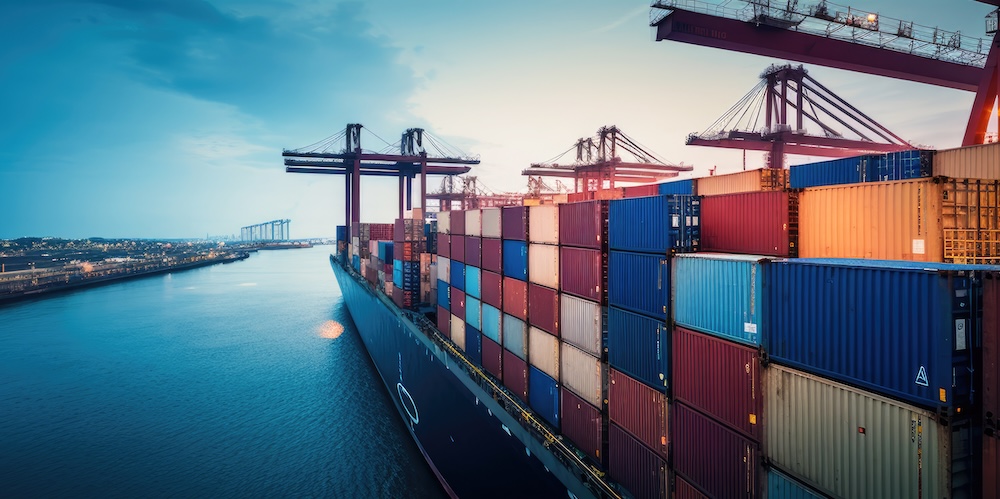Storage and Delivery: The Right Logistics Support

Global Supply Chain Stressors
2022 brought continued disruptions to logistics worldwide. Rising interest rates, inflation, and the war in Ukraine all continued to provide challenges to business owners around the world.
Last year, shipping constraints, truck driver shortages, and the lack of available warehousing space all contributed to lost revenue. Even e-retailer giant Amazon suffered their worst year since the dot-com crash of 2000, with stocks tumbling 51% in 2022.
Manufacturing Challenges: JIT Inventory and Constraints
Establishing an efficient warehousing system is key to maintaining productivity in the face of such challenges.
The use of Just in Time (JIT) inventory adds more stress. In this way of doing business, manufacturers do not begin an order without an immediate purchase order. As a result, manufacturers have less time to make products. This places extra pressure on warehouses to have accurate, up-to-date inventories to meet their delivery demands.
Customized Solutions: AmerTrans Logistics
We offer customized solutions to meet your warehousing and distribution needs. We know that optimized warehouse organization and efficient final mile delivery can keep you moving on schedule. As AmerTrans C.E.O. Matt Klein notes, “through our warehousing and methodology, we’ve been able to reduce the logistics and shipping constraints out there.”
We always deliver scalable, agile solutions. For example, to make you more efficient, we may audit warehouse workflow. In addition, we may offer cross dock solutions, or plan for better final mile delivery. Whatever it takes to keep your business running smoothly.
Warehousing Needs
You may require warehousing for a variety of reasons. For example, if you’re opening a new location or performing renovations on an existing site, you’ll need a place to keep your inventory safe. Or, if you’re a retailer that offers seasonal merchandise, you’ll need storage to keep your cargo secure until needed.
Auditing Operational Efficiency
First, we’ll audit your warehouse systems for efficiency. We’ll see how well you’re running your systems before making any suggestions. Some of the things we’ll check for you include inventory organization and redundancy, floor layout, and order management.
From there, you’ll be able to determine new warehouse performance goals. Then, you can match those goals with Key Performance Indicators (KPIs) to monitor success.
In reviewing your warehouse operational efficiency, we’re always looking for ways to increase productivity and reduce waste. More efficient systems means that your customers will receive their orders intact and on time (or even ahead of schedule).
Warehouse Technologies
One way to increase productivity is to improve how you use technology in your space. An audit will reveal ways to use AI in your warehouse. For example, we may suggest using automated robots to improve overall workflow and save you money.
Or, we may implement our integrated Warehouse Management System (WMS) to monitor your inventory in real time. Our unique, cloud-based system provides secure access to up-to-the-minute data, including item, pallet, and location details. In addition, our WMS can easily integrate with outside shipper carrier systems and enterprise resource management (ERP) systems.
Finally, our WMS is fully integrated with our Transportation Management System (TMS) which means that you’ll always be able to track your inventory, whether it’s in the warehouse or out for delivery. Centralized data means increased transparency, lower costs, and improved warehouse logistics.
Cross Docking Services
After a warehouse audit, we may discover that you need cross docking services to make your shipping more efficient. Cross docking will allow you to save time and money by combining shipments upon arrival at the warehouse before storage.
That way, you’ll streamline your delivery process by lowering the number of required deliveries. And, you’ll save money on labor and materials in warehousing since you’ll have less cargo that needs to be stored.
Get Delivery Done Right
As a business owner, you know how important it is for a shipment to arrive on time and intact. Missing, damaged, or late goods contribute to a negative customer experience and hurt your brand. Yet, many businesses experience disruptions during this crucial final step.
Once you have your warehousing systems running more efficiently, the next thing you need to do is ensure smooth delivery. The best way to do this is with accurate final mile delivery service.
Final mile is the last step in the supply chain—delivery of the product to the customer. That may be to a retailer or to the customer’s house. It is important that you plan for efficiency in this last, critical part of a shipment’s delivery.
High delivery costs, outdated technology, and inadequate route planning can cause late deliveries, compromising product quality and customer satisfaction. It’s essential to make a plan to reduce and eliminate these costly roadblocks.
Final Mile Services
We offer strategic support to ensure that your final deliveries are precise and secure. First, we will schedule deliveries based on your specific criteria. Also, we will use the latest technology to track the progress of your delivery and even confirm delivery upon arrival.
Getting Your Goods to Your Customers
Now more than ever, it’s essential that you do all you can to ensure your goods are delivered on time. Your customers are depending on you.
To make sure that your supply chain is running as efficiently as possible, give us a call. We’ll analyze your needs, audit your existing plan, and offer customized, practical solutions to make your deliveries more efficient.
Related Articles
General
Inbound Logistics Explained: Processes, Benefits & Best Practices

Efficiency is the cornerstone of business success in today’s competitive environment. Inbound logistics, a critical component of supply chain management, plays a pivotal role in determining a company’s operational effectiveness and overall performance. Inbound logistics encompasses the processes involved in receiving, storing, and distributing raw materials, components, or finished goods from suppliers to production facilities […]
Read MoreGeneral
Freight Shipping vs. Standard Shipping: Understanding the Difference

Freight shipping stands as a cornerstone of modern logistics, propelling the global economy forward through the efficient movement of goods. This essential component of commerce encompasses the transportation of large quantities of products, distinguishing itself from standard shipping methods in scale, complexity, and significance. Understanding freight shipping is essential for business owners aiming to optimize […]
Read More
